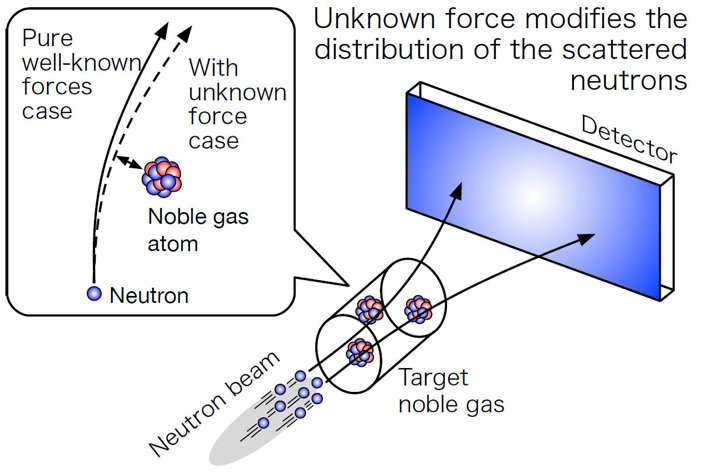Understanding gravity: The nanoscale search for extra dimensions

Often, practical limits control the experimental measurements that can be made, governing the difference between what we expect to be true based on the most likely predictions of models and calculations, and findings that have been supported by testing. A team of researchers has now used the world's highest intensity neutron beamline facility, at J-PARC in central Japan, to push the limits of sensitivity for the study of gravitational force. The multicenter work probing the nm range was recently published in Physical Review D.
Most people are familiar with how things around us interact as a result of gravitational interactions. This behavior, known to follow an inverse square law (ISL), has been well explained by experiments down to less than 1 mm. Gravitational interactions over long-distances have also been supported by data collected from astronomy. However, until now, there has been little experimental evidence to support agreement with the ISL when the often-unpredictable quantum level is approached.
"There are numerous effects suggested by accepted theories of gravity over short distance ranges that could be borne out by experiment," study author Tatsushi Shima of Osaka University says. "By successfully extending the search range of an exotic gravity down to short distances of ~0.1 nm, we have been able to demonstrate the highest sensitivity reported to date, producing experimental data that will help to unravel the proposals."
The statistical sensitivity achieved was made possible using the high intensity pulsed neutron beam at the J-PARC facility. The net electromagnetic neutrality of neutrons means that the experiments were not influenced by the electromagnetic background that hampers other approaches to probing short distance ISL deviations. The experiment, based on neutron-noble gas scattering, was the first time-of-flight neutron scattering study.
"As the performance of the world's most powerful beamlines improves, we are able to significantly enhance our knowledge and understanding in step," study corresponding author Tamaki Yoshioka of Kyushu University says. "Such iterative improvements can be very revealing. In the case of gravitational interactions we have made substantial steps towards understanding the dimensions of the space around us."
It is hoped that the study, along with future work to improve sensitivity even further, will help shed light on whether the space in which we live is limited to three dimensions.
More information: Christopher C. Haddock et al. Search for deviations from the inverse square law of gravity at nm range using a pulsed neutron beam, Physical Review D (2018). DOI: 10.1103/PhysRevD.97.062002
Journal information: Physical Review D
Provided by Osaka University




















